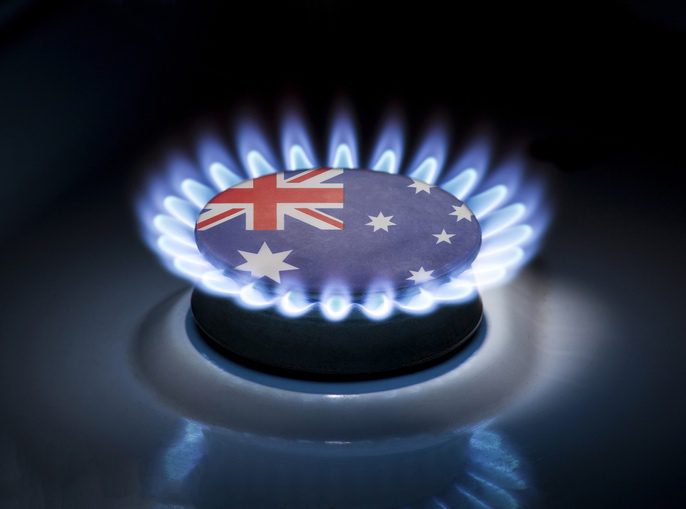Wodonga is the latest location for a “biggest in Australia” green hydrogen electrolyser commitment, but experts are scathing about its proposed use — as household gas.
A $51 million, 10 megawatt (MW) electrolyser is planned for North East Water’s local wastewater plant, one of the largest proposed for Australia, and will feed green hydrogen into the local gas network at a blend of up to 10 per cent.
The Victoria government will kick in $12.3 million, the Australian Renewable Energy Agency (ARENA) $36.1 million, and the Clean Energy Finance Corporation (CEFC) the remaining $2.6 million.
Construction will start this year with commissioning expected in 2025.
Victorian Minister for Climate Action Lily D’Ambrosio says the project represents a significant step to build scale and capability for a renewable hydrogen industry.
Federal minister for climate change and energy Chris Bowen says building experience around making and using renewable hydrogen should create economic opportunities for the future.
Cementing gas dependency
But stuffing gas networks with hydrogen and spending a few million on small electrolysers is “a total economic waste of time”, says Climate Energy Finance director Tim Buckley, a view echoed by others including Cambridge Professor, and co-founder of the Hydrogen Science Coalition, David Cebon.
Using hydrogen for home use encourages Australia to remain dependent on gas while at the same time being extremely inefficient.
“Studies also show that injecting 20 per cent of hydrogen into existing gas pipelines will only save around 7 per cent of carbon emissions,” Cebon recently told RenewEconomy.
Hydrogen has a lower energy density than natural gas which means a 5 per cent blend in gas networks requires 3 per cent more gas to get the same amount of energy to customers, while at the same time using more electricity to it through the network.
Buckley says at the end of the day gas companies are substituting high emission, low cost gas for low emission, high cost green hydrogen and it’s a low value use of the hydrogen.
“Furthermore, the world has moved beyond 10 MW pilots,” he says.
“In the meantime, global lithium ion battery capacity is expanding 1000 per cent at the moment. Sales of electric vehicles in China grew 100 per cent last year, there’s nothing incremental about that.”
Indeed, just last week Fortescue head of decarbonisation Christiaan Heyning signalled a shift away from hydrogen fuel cell trucking towards electric, explicitly saying that hydrogen requires three times the energy to do what a battery can. Mining giant BHP followed suit a day later.
And as transport opportunities for hydrogen fade rapidly into the distance, critics are skeptical about its use in homes. Its most likely to be used for ammonia, green steel and other specific industrial uses.
Small-scale electrolysers popping up everywhere
The latest Victoria project will be fed with electricity from an as yet unnamed wind farm nearby and is eight times as large as the current operating electrolyser in Australia, the 1.25 MW hydrogen plant in Adelaide’s Tonsley Park, South Australia.
In Victoria, Viva Energy confirms that its 2.5 MW electrolyser will arrive this year in Geelong, backed by $22.8 million from ARENA and $1 million from the Victorian Government’s Renewable Hydrogen Commercialisation Pathways Fund.
RenewEconomy is seeking confirmation that the Viva project is on track. Alan Finkel, the lead author of Australia’s National Hydrogen Strategy, says he expects battery vehicles to beat hydrogen fuel cell cars. And he owns one of each.
There are a number of large proposed green hydrogen electrolyser projects, such as Fortescue Future Industries’ and Incitec Pivot’s 500 MW idea for Brisbane, but few have committed funds and commissioning dates.
Those that do tend to be backed by a government and have tended to be small.
The next “biggest in Australia” electrolyser that is most likely to be commissioned is the 10 MW device currently being built by ENGIE and Mitsui & Company in the Pilbara, which received $47.5 million from ARENA last year and is expected to start producing in 2024.
New South Wales is spending $64 million on two electrolysers, a 10 MW electrolyser at Port Kembla to produce green hydrogen for four refuelling stations and a 12 MW electrolyser near Moree to convert green hydrogen and air captured hydrogen into green ammonia for use in agriculture.
But, if South Australia can get it up, the most ambitious plan is a 250 MW electrolyser. At that size it would be the biggest in the world as well as in Australia.
The state government is kicking in all of the funding — almost $600 million on the electrolyser and 200 MW hydrogen power plant — for the Whyalla plant.
Is it enough?
But as Australian governments are tipping a few millions into small-scale electrolyers, the rest of the world is racing ahead with battery technologies and green hydrogen.
Last week the US Department of Energy Loans Office handed a single $US9.2 billion ($13.8 billion) loan to Ford and South Korean company SKO to build three battery making factories. The US loans office has $400 billion to spend in two years, with goals to increase that sum substantially.
Europe countered with EUR 800 billion ($1.3 trillion) in green bonds to be spent by 2026 on new energy technologies.
In response, Australia’s Critical Minerals Strategy, released last week, promises $500 million from the Northern Australia Infrastructure Facility (NAIF) to develop a value-adding industry for battery and other metals.










